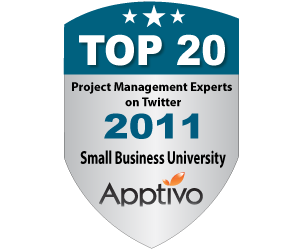I recently interviewed Benjamin Locwin of lonza Biopharmaceuticals
to talk about the ins and outs of leadership in today’s competitive business
landscape. Locwin is speaker at the upcoming ProjectWorld & World Congress for Business
Analysts 2014 conference in Seattle taking place next month. He will be presenting
a session entitled, “Using Evidence-Based Practice for High-Impact Messaging.”
At PW&WCBA, you will have the opportunity to join
industry thought leaders as they re-examine how to identify opportunities and
track their success, understanding what it means to be an effective leader in a
virtual and multicultural world, and explore the future role of project managers and business analysts with
the corporation.
Check out what Locwin had to say:
IIR: How do you,
as a leader, stand out in a crowd in this competitive business world?
Locwin: For this,
leadership branding is critically important; I have my own leadership brand,
and this constancy of message carries through all of the work I do with my
teams.
IIR: What are
characteristics of a GREAT leader?
Locwin: Listening,
being empathic, and not being afraid to make the big decisions. To paraphrase
Peter Drucker, an expert in a field has seen enough to be able to quickly
appraise a situation and know what’s important to focus on.
IIR: How does a
successful leader communicate?
Locwin: One word:
Often. If a leader isn’t developing a strategy and communicating a vision, and
then communicating frequent progress checks, no one knows what the status is of
their achievement work.
IIR: What are the
most important decisions you make as a leader of your organization or team?
Locwin: As an
organization gets larger there can be a tendency for the “institution” to
dampen the “inspiration.” How do you keep this from happening? By disentangling
the chaos of the entire big picture and making the smaller teams still feel
like critical cogs in the whole machine; It’s really a sense of scale in this
case that demotivates. By making the goals and achievements real, tangibility
can be felt.
IIR: How do you
encourage creative thinking within your team or organization?
Locwin: Much of
this is derived from Edward de Bono; Lateral thinking requires tools and
techniques to encourage it often. I have developed these systems so that they
frequently call upon the experts to continuously refine their work in new,
bold, and creative ways.
IIR: How do you
help a new employee understand the culture of your organization?
Locwin: Culture
can only be felt or measured on a very broad scale; it’s how the business
functions as a whole and in the context of its own unique ‘corporate memory.’
You can’t ‘train’ a new employee on the culture of the organization, he or she
learns by interacting within it.
IIR: What is one
characteristic that you believe every leader should possess?
Locwin: An
understanding of behavioral psychology and fluency with statistical variation.
IIR: What is the
biggest challenge facing leaders today?
Locwin: Diversity
in the workplace with respect to different fluencies with technology and media.
Being part of the ‘next-five-minutes’ forecasting model (which is to say that
long-term forecasting as had been done for many decades in business is no
longer relevant with such short time horizons now).
IIR: What is the
one behavior that you have seen derail more leaders’ careers?
Locwin: Believing
that natural variation doesn’t occur.
IIR: What advice
would you give someone going into a leadership position for the first time?
Locwin: Stop.
Look. And listen. Don’t go out and make decisions until you’ve taken stock on
how the status quo is running; You’d be more likely to make things worse than
better.
IIR: What are you
doing to ensure you continue to grow and develop as a leader?
Locwin: Continuous
learning. It’s all about adaptability.
Locwin will be speaking at ProjectWorld & World
Congress for Business Analysts 2014, taking place in Seattle, Washington
September 22-24th at the W Hotel. The 2014 program is designed with courses for
all training levels, a robust agenda, and most importantly tangible lessons
which you can begin implementing the day you return to your office, making you
even more valuable to your organization. To
learn more or register for the event, click here: http://bit.ly/1p8VOGT







